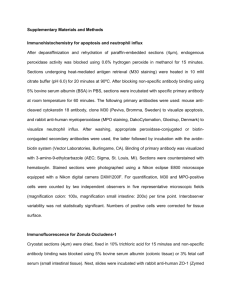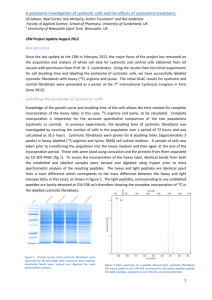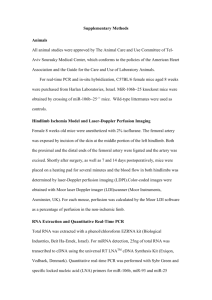Supplementary Methods (doc 64K)
advertisement
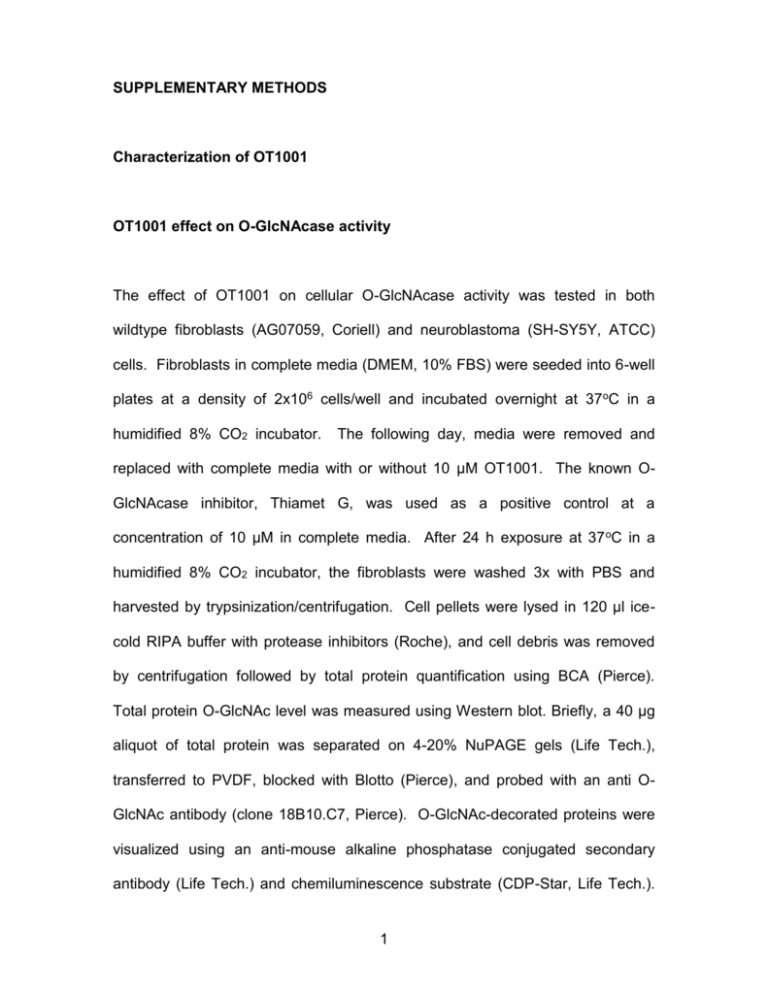
SUPPLEMENTARY METHODS Characterization of OT1001 OT1001 effect on O-GlcNAcase activity The effect of OT1001 on cellular O-GlcNAcase activity was tested in both wildtype fibroblasts (AG07059, Coriell) and neuroblastoma (SH-SY5Y, ATCC) cells. Fibroblasts in complete media (DMEM, 10% FBS) were seeded into 6-well plates at a density of 2x106 cells/well and incubated overnight at 37oC in a humidified 8% CO2 incubator. The following day, media were removed and replaced with complete media with or without 10 μM OT1001. The known OGlcNAcase inhibitor, Thiamet G, was used as a positive control at a concentration of 10 μM in complete media. After 24 h exposure at 37 oC in a humidified 8% CO2 incubator, the fibroblasts were washed 3x with PBS and harvested by trypsinization/centrifugation. Cell pellets were lysed in 120 μl icecold RIPA buffer with protease inhibitors (Roche), and cell debris was removed by centrifugation followed by total protein quantification using BCA (Pierce). Total protein O-GlcNAc level was measured using Western blot. Briefly, a 40 μg aliquot of total protein was separated on 4-20% NuPAGE gels (Life Tech.), transferred to PVDF, blocked with Blotto (Pierce), and probed with an anti OGlcNAc antibody (clone 18B10.C7, Pierce). O-GlcNAc-decorated proteins were visualized using an anti-mouse alkaline phosphatase conjugated secondary antibody (Life Tech.) and chemiluminescence substrate (CDP-Star, Life Tech.). 1 Chemiluminescence signal was imaged using an Alpha Innotech FluoroChem Q imager and quantified by densitometry using AlphaView SA software (Alpha Innotech). After O-GlcNAc imaging, the blots were stripped (Restore Plus, Pierce) and re-probed with an anti-calnexin antibody (ab22595, Abcam). For OGlcNAc quantification, whole lane O-GlcNAc densitometry was background subtracted and normalized to the calnexin load control band. For SH-SY5Y neuroblastoma cells, the experiment was carried out using the same protocol as that used for fibroblasts, except 5x106 cells/well in complete media were plated onto collagen coated 6-well plates. Multiple concentrations (0 μM to 100 μM) of OT1001 and Thiamet G were used. Enzymatic activities and OT1001 selectivity OT1001 selectivity was assessed by measuring its effect on the enzymatic activity of hexosaminadase (Total Hex, Hex A/S and Hex B), and three other lysosomal hydrolases: α-galactosidase, β-galactosidase and glucocerebrosidase. For enzymatic assays, wildtype fibroblast (CRL2076) pellets (~2.5e6 cells/pellet) were prepared, frozen, then lysed with pH 5 lysis buffer (82.4 mM sodium phosphate/58.8 mM citric acid, 0.25% sodium tauorocholate, 0.1% TX-100, pH 5) and clarified by centrifugation. Fibroblast lysates were diluted 20:1 in pH 5 reaction buffer (82.4mM sodium phosphate/58.8 mM citric acid, 0.25% sodium tauorocholate, pH 5) for all enzyme assays. In a 96-well format, 10 μl of diluted fibroblast lysate is combined with 90 μl of a 4-methylumbelliferyl (4-MU) substrate, incubated for 1 h at 37oC, and the reaction was stopped with 100 μl of 2 0.5M sodium carbonate. Released 4MU was measured using a Perkin Elmer Victor V fluorescence plate reader using excitation of 355 nm and emission of 460 nm. Measurement of total hex activity and inhibition of total hex activity by OT1001 was carried out using 2 mM final concentration of 4-methylumbelliferyl N-acetyl-β-D-glucosaminide (MUG); for hex A/S activity and inhibition, 2 mM of 4-methylumelliferyl N-acetyl-β-D-glucosamine-6-sulfate (MUGS); hex B activity was calculated as the difference between total hex and hex A/S activity; for αgalactosidase activity and inhibition, 2 mM of 4-methylumbelliferyl α-Dglucopyranoside; for β-galactosidase activity and inhibition, 2 mM of 4methylumbelliferyl β-D-galactoside; for glucocerebrosidase activity and inhibition, 2 mM of 4-methylumbelliferyl β-D-glucopyranoside. As positive controls for enzymatic inhibition, the following known inhibitors were used: for αgalactosidase, 100 μM 1-deoxygalactonojirimycin; for β-galactosidase, 100 μM of N-Butyl-1-deoxygalactonojirimycin; for glucocerebrosidase, 100 μM isofagamine. All enzymatic activity measurements were done in duplicate. OT1001 effect on cell viability Viability of human fibroblasts (CRL2076) and human neuroblastoma (SH-SY5Y) cells was tested after prolonged exposure to varying concentrations of OT1001. In a 96-well plate, fibroblasts were plated in complete media (DMEM, 10% FBS) at a density of 5 x 103 cells/well and incubated overnight at 37oC in a humidified 8% CO2 incubator. The following day, media were removed and replaced with fresh complete media containing increasing concentrations of OT1001 from 0 3 mM up to 1 mM. After fibroblasts were exposed to OT1001 for either 72 or 120 hrs at 37oC in a humidified 8% CO2 incubator, living cells were quantified using a tetrazoliuim-formazan conversion method according to the manufacturer’s instructions (Promega Non-Radioactive 96-well Titer assay, TB112). SH-SY5Y cells were plated at a density of 15 x 103 cells/well in 96-well collagen-coated plates (Nunc #152036) with 50 μl of complete media and incubated overnight at 37oC in a humidified 8% CO2 incubator. The following morning, 50 μl of 2x concentration of OT1001 was added to the 96-well plate for a final concentration of OT1001 ranging from 0 mM to 1 mM. At the end of 24, 48, and 120 hrs of exposure to OT1001, living SH-SY5Y cells were quantified in the same manner as described above for the fibroblasts. All dosing concentrations were done in triplicate. OT1001 proof of concept study supplementary methods Fear conditioning Contextual and cued fear conditioning were assessed using the ANY-Maze fear conditioning system (Stoelting Co., Wood Dale, IL, USA) as previously described1. Briefly, on day 1, mice were placed into context A (metal grid floor, black and white checked walls and chamber lights at 100% brightness) and allowed to explore for 2 min (baseline) prior to receiving 3 tone-shock pairings (30 s of 5 kHz, 80 dB tone co-terminating with a 2s 0.5 mA scrambled footshock). Each tone-shock pairing was separated by a 30s interval, and mice were given 4 30 s after the final tone-shock pairing before being returned to their home cage. On day 2, mice were placed into context B (black Perspex plastic floor, grey walls and chamber lights at 50% brightness) and allowed to explore for 2 min before 3 min exposure of a constant 5 kHz tone. On day 3, mice were returned to context A and allowed to explore for 3 min. Freezing behavior (defined as the lack of movement other than that needed for respiration) was remotely recorded and analyzed using ANY-Maze (Stoelting Co., Wood Dale, IL, USA). Memory for tone (cued memory) or context (contextual memory) for each mouse was obtained by subtracting the percentage time freezing during baseline from the percentage time freezing on day 2 (last 3 min) or day 3 (full 3 min) respectively. Aβ assay Right hemibrains were processed via differential detergent solubilization 2. For analysis of native oligomeric Aβ protein structure, 2-4 μl native protein samples from TBS-soluble were spotted onto activated/pre-wetted PVDF membrane (0.22 μm; Millipore) and allowed to dry. Following protein spotting, membranes were blocked for 1 h at room temperature in 5% w/v non-fat milk (Santa Cruz) in TBS containing 0.1% v/v Tween-20 (Fisher Scientific; TBS-T). Membranes were then incubated in the indicated primary antibody (in 5% milk/TBS-T) overnight at 4C, washed 4x in TBS-T, incubated in species-specific HRP-conjugated secondary antibody (in 5% milk/TBS-T) for 1 h at room temperature, and then washed 4x in TBS-T. Membranes were subsequently developed with ECL Western blotting 5 substrate (Pierce) using the Fujifilm LAS-3000 developer. Membranes were then washed 1x in TBS-T and stripped in low pH stripping buffer [25 mM Glycine HCl, pH 2.0 and 1% w/v SDS] with vigorous shaking to remove primary and secondary antibody, washed 3x in TBS-T, and blocked for 1 h (in 5% milk/TBS-T) at room temperature before probing with the next primary antibody. Integrated density of immunoreactive spots was measured using MultiGauge Software (FujiFilm) and normalized to % control (vehicle). Generation, purification, and characterization of rabbit pAβ A11 (anti-prefibrillar oligomers, 0.5 μg/ml), rabbit pAβ OC (anti-fibrillar oligomers and fibrils; 0.25μg/ml) and mouse mAβ Nu-4 (anti-oligomers; 1 μg/ml) have been described previously3, 4. Normalization to total APP/Aβ signal was achieved by detection of human APP transgene metabolites with the mouse mAb 6E10 (1:1000; Covance). Peroxidaseconjugated goat anti-rabbit IgG (H+L; 1:20,000; Vector Labs) or goat anti-mouse IgG (H+L; 1:20,000; Vector Labs) were used for detection. To quantify monomeric Aβ levels, human/rat Aβ 1-40/1-42 ELISA kits (Wako) were used according to the manufacturer's instructions. Absolute concentrations of monomeric or oligomeric Aβ were normalized to initial tissue weight prior to analysis. 6 SUPPLEMENTARY FIGURE LEGENDS Supplementary Figure 1. Selectivity and cell-toxicity summary of the β-hextargeted pharmacological chaperone O1001. OT1001 does not inhibit O- GlcNAcase (a-b) at 100 μM or the lysosomal enzymes β-glucocerebrosidase (GCase), α-galactosidase (α-Gal), or β-galactosidase (β-Gal) at 100 μM, the highest concentration tested (c). Additionally, OT1001 had little or no effect on cell viability for human skin fibroblasts (d) and SH-SY5Y (e) treated with concentrations as high as 1 mM OT1001 for up to 120 hrs. OT1001 increases βhex levels 3-Fold in fibroblasts. Data expressed as mean ± s.e.m. Supplementary Figure 2. Contextual and cued fear conditioning learning behavior following treatment of the β-hex-targeted pharmacological chaperone OT1001 in Dutch APPE693Q transgenic mice. Three-mo-old male Dutch APPE693Q transgenic mice were either untreated (n = 15), or orally dosed with vehicle (n = 15) or OT1001 (3, 10, 30 or 100 mg/kg OT1001; treated n = 13/group) for three months. OT1001 had no effect on contextual or cued learning behavior. P > 0.05, One-way ANOVA with Bonferroni posthoc analyses. Data expressed as mean ± s.e.m. Supplementary Figure 3. Aβ and oligomer levels following 3-months treatment of the β-hex-targeted pharmacological chaperone OT1001 in Dutch APPE693Q transgenic mice. Three-mo-old male Dutch APPE693Q transgenic mice were either untreated, or orally dosed with vehicle or OT1001 (3, 7 10, 30 or 100 mg/kg OT1001; treated n = 13/group) for three months. OT1001 had no effect on Aβ40 (a-d), Aβ42 (e-h), Aβ42/40 ratio (i-l) or A11 prefibrilar Aβ (m) or oligomers using the antibodies (OC or Nu-4, n-o) (n = 5/group). P > 0.05, One-way ANOVA with Bonferroni posthoc analyses. Data expressed as mean ± s.e.m. SUPPLEMENTARY REFERENCES 1. Steele JW, Brautigam H, Short JA, Sowa A, Shi M, Yadav A et al. Early fear memory defects are associated with altered synaptic plasticity and molecular architecture in the TgCRND8 Alzheimer's disease mouse model. The Journal of comparative neurology 2014; in press. 2. Nishimura N, Hachisuga T, Saito T, Kawarabayashi T. Subsequent endometrial carcinoma with adjuvant tamoxifen treatment in Japanese breast cancer patients. Int J Gynecol Cancer 2001; 11(4): 272-276. 3. Tomic JL, Pensalfini A, Head E, Glabe CG. Soluble fibrillar oligomer levels are elevated in Alzheimer's disease brain and correlate with cognitive dysfunction. Neurobiology of disease 2009; 35(3): 352-358. 8 4. Lambert MP, Velasco PT, Chang L, Viola KL, Fernandez S, Lacor PN et al. Monoclonal antibodies that target pathological assemblies of Abeta. J Neurochem 2007; 100(1): 23-35. 9
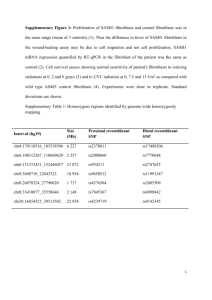
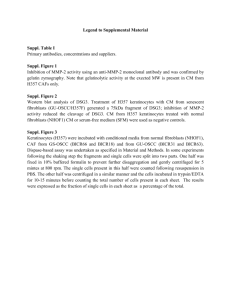

![%SYS-3-OVERRUN : Block overrun at [hex] (red zone [hex])](http://s3.studylib.net/store/data/007301636_1-ac70f3209bae6dd18e3a1bf696206cf5-300x300.png)

